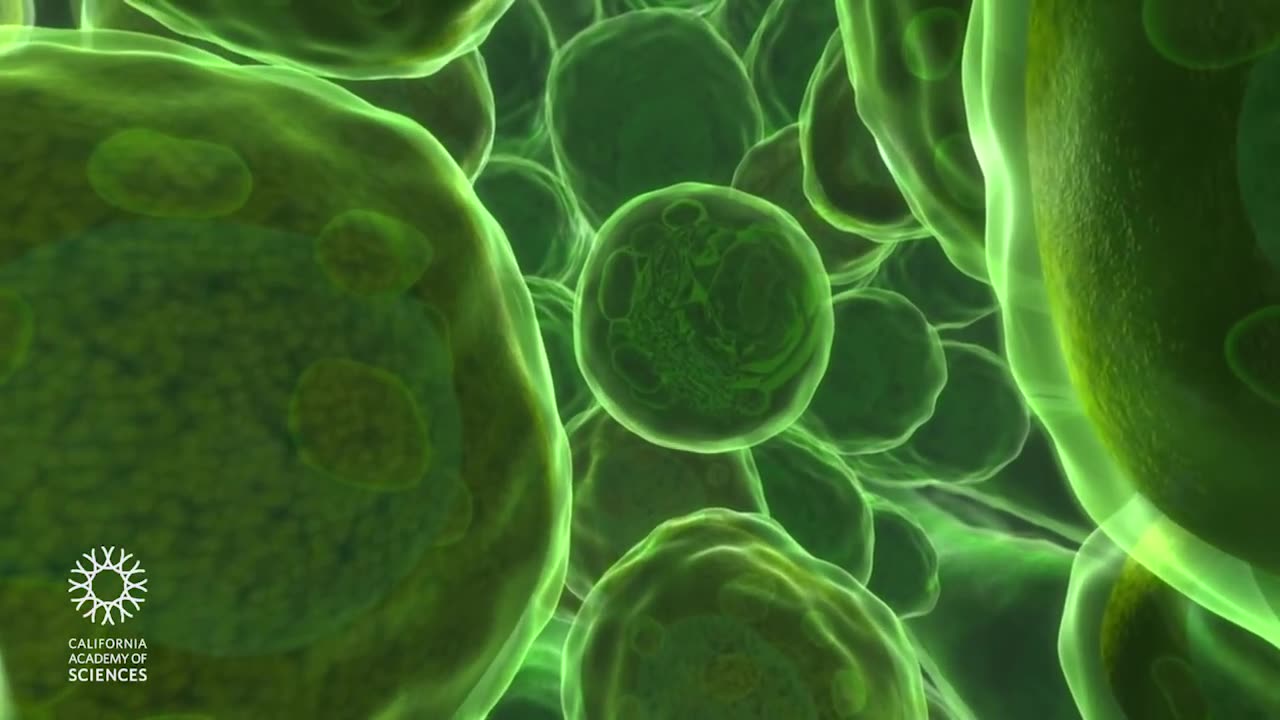Premium Only Content

Travel Deep Inside a Leaf - Annotated Version
0:05: We are approaching a redwood tree. To animate a scientifically accurate leaf, artists studied the texture of a redwood leaf specimen on a glass slide at high resolution. They even counted the stomata, and used that exact count for this film!
0:25: These leaves would be measured on a centimeter scale. Throughout the animation, we will gradually zoom in to smaller scales.
0:40: As we approach a single stoma, we are now on a millimeter scale.
0:48: As we enter the interior of the leaf, we see many individual palisade cells. These cells are where photosynthesis takes place; they are translucent to allow sunlight to enter.
1:00: As we approach a single palisade cell, we’ll zoom down to the micrometer scale. The shapes inside the cell are organelles: the bright globules at the bottom are the Golgi apparatus; the yellow spotted tubes are endoplasmic reticulum studded with ribosomes.
1:09: That large, blue membrane surrounds the nucleus; the purple blobs are mitochondria.
1:18: The faint, yellow, spider-web structure of the cytoskeleton provides structure and support to the cell.
1:24: You are about to enter a chloroplast; inside you see flat, pancake-like membranous structures called thylakoids. This is where the light-dependent reactions of photosynthesis take place to produce ATP, the cell’s energy carrier molecule. way
1:38: The time scale has changed: the molecules are shown moving 1 million times slower than in real life!
1:42: As we near an individual thylakoid, the animation scale continues to shrink down to the molecular level, where things are measured in nanometers.
1:52: The green and blue bush-like structures are photosystems: clusters of proteins that absorb light energy from the sun and help convert it into the chemical energy that’s stored in the bonds of the energy carrier molecule called ATP.
2:03: The yellow-green, rotating structure is an enzyme called ATP synthase. This molecular machine facilitates the flow of protons down their concentration gradient from one side of the thylakoid membrane to the other, using the energy released in the process to assemble ATP.
2:16: The pulses of light in the thylakoid membrane in which the photosystems are embedded represent energized electrons being passed from one photosystem to another, passing along the energy which will be stored in the bonds of ATP (the classic “bucket brigade”).
2:26: The small “wigglies” are ATP molecules. Living things store energy in the bonds of the ATP molecules and then use that energy to conduct all the processes of life.
-
 LIVE
LIVE
Donald Trump Jr.
2 hours agoInterview with CIA Deputy Director, Plus FBI's Major Maduro-TDA Discovery | Triggered Ep236
21,718 watching -
 LIVE
LIVE
BonginoReport
1 hour ago“Womanosphere” Podcasts Trigger Leftist Media - Nightly Scroll w/ Hayley Caronia (Ep.34) - 04/24/25
3,780 watching -
 LIVE
LIVE
Dad Dojo Podcast
5 hours agoEP29: Lebron Turns Heel, Steroids and more
439 watching -
 DVR
DVR
Kim Iversen
2 hours agoXi and Zelensky IGNORE Trump: Is America's Power Crumbling?
42.8K28 -
 12:19
12:19
T-SPLY
5 hours agoDemocrats Start Economic War With El Salvador!
8923 -
 13:42
13:42
SantaSurfing
3 hours ago4/24/2025 - Part 1 on Endless Frontiers Efficient & Powerful Tesla Homes! Revolutionary!
4.97K11 -
 1:25:56
1:25:56
vivafrei
5 hours agoJudge Cano BANNED from the Bench! Is That the COVER-UP? Tariffs, Trans in Military & Fall of Canada!
72.1K25 -
 47:49
47:49
Candace Show Podcast
2 hours agoShannon Sharpe Out At ESPN. I Taylor Swift Subpoena Incoming. | Candace Ep 182
16.8K39 -
 DVR
DVR
Ark of Grace Ministries
7 hours agoProphecy Fulfilling The Pope Has Passed Over & A Great Shaking In The Earth
6.29K9 -
 LIVE
LIVE
Spartan (Pro Halo esports Player)
2 hours agoSdcrims no comms, then College match
146 watching